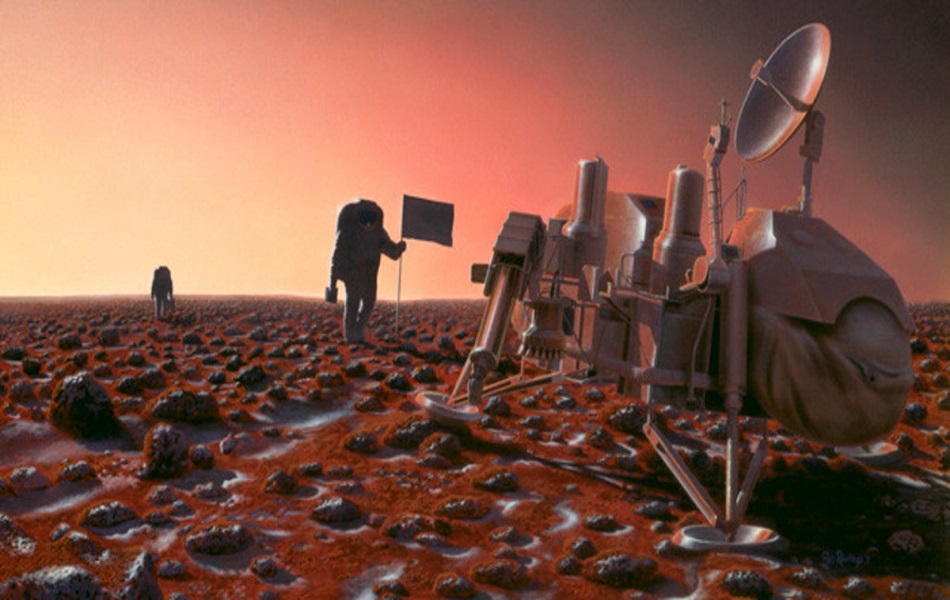For centuries, humans have looked up at the Red Planet with wonder. Once seen only through telescopes, Mars is now the target of some of humanity’s most ambitious missions. With NASA, SpaceX, and other global space agencies investing billions, the dream of colonizing Mars is moving from science fiction to scientific reality.
But can humans really live on Mars? What technologies do we need to survive? And why is colonization so important for the future of humanity? Let’s explore.
Why Mars?
Out of all planets in our solar system, Mars is the most likely candidate for colonization because:
- It has day/night cycles similar to Earth.
- Water ice exists beneath its surface.
- Its atmosphere, while thin, contains carbon dioxide, which can be converted into oxygen.
- Gravity is weaker than Earth’s (about 38%) but strong enough for long-term human adaptation.
Unlike the Moon, Mars offers the resources and environment to build sustainable colonies.
Science and Technology Behind Mars Colonization
Rocket Technology – The Path to Mars
The biggest hurdle is reaching Mars safely and cost-effectively.
- SpaceX Starship: Designed to transport 100+ people to Mars at a time.
- Reusable rockets: Lower the cost of space travel dramatically.
- Nuclear propulsion systems: Could shorten the journey to just a few months.
Life Support Systems
Survival on Mars requires advanced systems to provide:
- Oxygen: Extracted from CO₂ in the atmosphere using devices like NASA’s MOXIE experiment.
- Water: Harvested from underground ice.
- Food: Grown in hydroponic and aeroponic farms inside habitats.
Habitats and 3D Printing
- Colonies will need radiation-shielded shelters since Mars lacks a magnetic field.
- 3D printing with Martian soil will allow building durable habitats.
- Inflatable space habitats may be used in early missions.
Energy and Power Supply
- Solar panels will provide electricity, but dust storms pose a risk.
- Nuclear reactors may become the main power source for Mars bases.
Role of Robotics and AI
Before humans arrive, robots and AI will play a critical role in:
- Preparing landing sites.
- Mining resources.
- Building habitats.
- Conducting research and ensuring safety.
Rovers like Perseverance are already testing technologies for future colonists.
Challenges of Living on Mars
Harsh Environment
- Temperatures can drop below -80°C (-112°F).
- Frequent dust storms block sunlight for weeks.
- Low atmospheric pressure requires pressurized habitats and suits.
Human Health Risks
- Long-term exposure to radiation increases cancer risks.
- Low gravity may weaken bones and muscles.
- Psychological stress from isolation and confinement.
Ethical and Social Issues
- Who governs a Mars colony?
- Should Mars resources belong to all humanity or private companies?
- How do we ensure sustainable development without repeating Earth’s mistakes?
Economic Opportunities on Mars
Colonization won’t just be about survival—it will drive a new space economy.
- Mining resources for Earth and space industries.
- Space tourism for ultra-wealthy pioneers.
- Research and innovation in medicine, energy, and AI.
- A stepping stone for future missions to the outer planets and beyond.
The Future of Humanity on Mars
Near-Term Goals (2030s)
- First human missions to Mars.
- Building small research bases.
- Testing closed-loop life support systems.
Mid-Term Goals (2050s)
- Permanent colonies with thousands of settlers.
- Martian-grown food and fuel production.
- Economic partnerships between Earth and Mars.
Long-Term Vision (2100 and beyond)
- Self-sustaining cities with millions of people.
- Terraforming experiments to make Mars more Earth-like.
- Humanity becoming a multi-planetary species.
Colonizing Mars is one of the greatest challenges humanity has ever faced. Yet with advancements in rocket technology, AI, robotics, 3D printing, and life support systems, it is no longer just a dream.
While the road ahead is filled with risks, the rewards are extraordinary: new resources, scientific discoveries, and a second home for humanity. The colonization of Mars could secure our species’ survival and mark the beginning of a truly interplanetary civilization.
The question is no longer if we will colonize Mars, but when.
FAQs
Q1. When will humans land on Mars?
NASA and SpaceX aim for the first crewed missions in the 2030s, with permanent colonies expected later.
Q2. How will humans survive on Mars?
By using life support systems to generate oxygen, grow food, recycle water, and live in radiation-protected habitats.
Q3. What role does SpaceX play in Mars colonization?
SpaceX’s Starship is being developed to transport large numbers of humans and cargo to Mars.
Q4. Is it possible to terraform Mars?
Terraforming (making Mars more Earth-like) is a long-term possibility, but current science suggests it may take centuries.
Q5. Why is colonizing Mars important?
It ensures the survival of humanity, drives technological innovation, and opens up economic opportunities in space.

